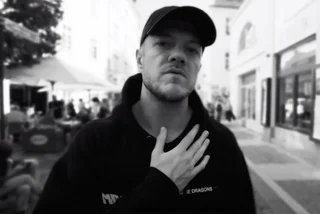People can now explore traditional music from around the world, including Czechia. The Global Jukebox project has made over 5,776 songs representing 1,026 cultures available online.
Its search engine can show you music from both Bohemia and Moravia, which have separate lists. Most songs are given generic titles such as “Bohemian Folk Song 1,” though a hidden info box lists the publisher and recording date, and a graph for connoisseurs charting the song’s specific vocal and sonic attributes.
PARTNER ARTICLE

Presumably, this information is useful for ethnographic researchers, for whom this database was originally compiled before it was opened up to the public. The website also includes tools to help teachers integrate music into lesson plans.
Folk tunes for any occasion
So far, the Moravian songs outnumber the Bohemian songs by 14 to 10, which is perhaps not surprising given Moravia's stronger folklore tradition. There are also 11 songs from southern and western Slovakia that the website groups as part of the same musical heritage group.
Even though the sampling is small, there is quite a bit of diversity. “Moravian Song 5” is an upbeat tune that you can dance to. Others, like “Moravian Song 1,” have odd harmonies that could sound better after a few shots of slivovice.
Some of Bohemian songs like “Bohemian Folk Song With Brass Band” have a familiar oom-pah brass sound, while others like “Chodsko song” are quite light and melodic.
Widen your musical horizons
The purpose of the site is to let people explore connections between families of expressive style. “One can travel the world of song, dance and language through the Wheel Chart and the Map" and sample "thousands of examples of the world’s music, dance and other expressive behavior,” according to the website.
Clicking on a flying kite icon on the bottom left of the screen will take you to a random part of the world to hear a song.
The site is an invitation to explore expressive patterns in one's own cultural heritage and that of others. “By inviting familiarity with many kinds of vocalizing, musicking, moving, and talking, we hope to reconnect people and communities with their creative heritage and to advance cultural equity,” the site states.
Help fill in the blanks
Much of the song data is a work in progress, and more songs will be added in the coming months. For instance, the song titles are in native languages, unless these were not available, in which case the researchers used "English translations or generic descriptive titles.”
People can leave comments and additional information for each song, and the site organizers will evaluate it. But unlike Wikipedia, the site is not crowdsourced, so random people can't log in and edit the data.
For further listening
There are more resources for people interested in musical heritage. The U.S. Library of Congress has a massive audio collection, with entries in Czech that include opera star Ema Destinnová singing the folk song “Ej, hory!” and a 1916 recording of “Kde domov muj,” which would later become the Czech national anthem.
Archive.org has thousands of items ranging from albums of Czech, Slovak and Moravian folk and dance music to underground recordings from the 1980s and 1990s.












 Reading time: 2 minutes
Reading time: 2 minutes 




























